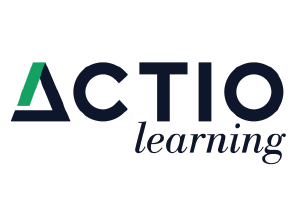They say that we can lead a horse to water, but we cannot force it to drink. The same is true of our learners … or is it?
Grab a piece of paper or open your favorite note-taking app, and write down three things that you want to see your learning organization achieve in 2021. If you are like me, you might be trying to avoid any mention of a “pandemic” or “crisis” — and perhaps even trying to avoid using words like “new normal.”
My three goals center around the same things we as learning leaders are always striving for: employee engagement, successful knowledge transfer and helping employees succeed in their jobs. There’s nothing new under the hood here; what’s new and what is changing might be the method of execution or the “how” — but not the “why.”
From SMART Goal to Just Cause
One of the biggest adjustments to my mindset that has helped me lead the learning function has been to adopt strategies over creating programs, to lean into a “just cause” rather than a “SMART goal” (as described in Simon Sinek’s book “The Infinite Game”). Try thinking larger than this year’s management training program. Try imagining the culture you want to help create rather than just the current initiative. Try strategically aligning everything in these visions with not just the business’ goals but also its mission and vision. Through this big-picture mindset, you can build opportunities to create practical and useful training in the moment, but you can also shift gears and adjust to changing market conditions and business needs without losing momentum.
I’m not saying that SMART goals are wrong; I just want to help you think bigger and dig deeper into your vision of what you’re building. Look at your goals again. Which mindset do they fit into? Is there a variation of your goals that better explains why you want to achieve them? Document not only the goals that you want to achieve but the reasons you want to achieve them.
Engaging Learners With a Bigger Purpose
Do you ever hear grumblings from learners who are not excited to come to training sessions or learning experiences? Here is where I’ve started seeing the biggest benefits of thinking holistically, past our current set of SMART goals and toward the “just cause” and the learning journey.
You can’t force learners to participate in your training courses (and if you can, they are likely rebelling internally), but you can help them see the benefits of the learning experience you are providing by sharing the big-picture vision and purposes driving the need for the training. When you strategically align your training and techniques to the company goals and core values, you reinforce the purpose and culture of the company while transferring the knowledge that employees need to be successful.
“A dream written down with a date becomes a goal. A goal broken down into steps becomes a plan. A plan backed by action makes your dreams come true” (Greg Reid).
Making Every Learning Activity Count
What do you have written down now? At this point, you should have your goals and the reasons why you want to achieve them. Now, you can think about the “how” again. When you’re planning your learning activities, presentations, classes, quizzes … go back to this document. Does your activity still make sense? Is it going to help you not only achieve this one learning objective but also reinforce and build on your “just cause?” Question everything that doesn’t strategically align to a business goal and doesn’t support this greater vision. Throw out anything that starts to feel like busywork, and make every action or activity count.
Do you need help figuring out the big picture or the vision that you should be aiming for? Reach out to your executive leadership team; go as high up the organizational chart as you need in order to gain clarity. Then, go share the goal and the dream or vision behind it with your learners, inspiring them to take the action needed to help your business succeed.






